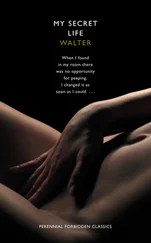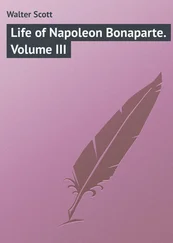The ways in which Whistler deployed his chosen technique were various. He adopted subtly different approaches for different types of picture. The nocturnes were done from recollection. Whistler had learnt the exacting discipline of training the visual memory in Paris as a pupil of Lecoq de Boisbaudran. Legros, too, had studied under Lecoq, but it was in the electric atmosphere of Tite Street, rather than at the Slade, that Sickert was introduced to the practice and became enthused about it. Lecoq’s course had been based on a series of exercises by which the mind was trained to absorb the salient details of a subject (the first lessons involved simple geometric forms) and then accurately to record them away from the motif. Whistler transformed the method into a ‘sort of game’. Sickert recalled walks along the river when he and his master would stop and ‘look for about ten minutes at a given subject, isolating it as much as possible from its surroundings’. And then, while Sickert checked his accuracy, Whistler would turn his back and try to recall the scene: ‘There is a tavern window, three panes wide one each side of the central partition and six panes deep. On the left is a red curtain half drawn … The tone of the roof is darker than that of the wall, but is warm in colour, and precisely the same in value as the sky behind it, which is a deep blue-grey.’ And so on. 26 Half marks would be awarded for remembering the position, size, and shape of the various objects that filled the scene and full marks for remembering the exact degrees of light and dark falling on them. 27 When he had got all the details right, Whistler would take a last look at the scene before they set off home, walking, for once, in silence ‘so that he might keep the impression fresh’. 28 The next morning, at the studio, he would paint the scene.
The Chelsea street scenes, by contrast, were done from life. Working en plein air was a relatively new departure for Whistler, but it suited his interests and his methods. Tiny, fleeting impressions of light and colour, devoid of detail, painted on panels only a few inches across, could be readily set down in ‘one wet’. Portraits were more problematic. They too were done from life, but on a large – almost life-size – scale. Whistler, who took a delight in all practical theories (a delight that he passed on to Sickert), believed that for the sake of pictorial precision it was important to paint to the scale of vision. He explained to Sickert that the human eye ‘could only see at one glance an object which in size was one-third of the distance between the eye and that object. In other words, if you [were] painting a man six feet high you should be 18 feet away from him.’ As a result, Whistler needed a very long studio. He was accustomed to place his model against the black velvet background, and alongside his model he placed his large-sized canvas. His painting table was 18 feet away. He would stand at his painting table, carefully survey the model, then, charging his long-handled brush with the requisite paint (considerably thinned with turpentine), would run at full tilt up to the canvas and drop the colour on the spot. It was an extraordinary performance, and many casual visitors to the studio assumed that it was put on merely for their benefit.
To capture the likeness of a human face and figure on a six-foot canvas in a single sitting was a difficult business. Whistler was not always successful at the first attempt, the second, or even the third and he would demand more and more sittings. But at these there could be no mere correction of the existing work: wet paint could not be put on top of dry paint. At each sitting, Whistler would in effect begin again. The surface of the picture was scrubbed down, and he would repaint the whole canvas. There was no building up of detail, only an ever increasing simplification. But the precious ‘unity’ of the picture – its ‘exquisite oneness’ – was maintained through the multiple operations, until Whistler finally achieved the desired effect and announced that the picture was finished. 29 At the end of each sitting there was always a moment of tension, as Whistler pondered his handiwork before passing judgement. Sickert recalled how, once, ‘after long standing on a chair with a candle, at the end of a sitting from Lady Archibald Campbell, and long indecision as to whether he should take out the day’s work or leave it, we went out along the Embankment to dinner. In the street he decided and said to me, “You go back. I shall only be nervous and begin to doubt again. Go back and take it all out” – which I did with a rag and benzoline.’ 30
Whistler was a printmaker as well as a painter. His earliest prints had been closely worked creations done from drawings, but after his sojourn in Venice he adopted a freer and less laborious approach, working en plein air on small copper plates. Sickert described the new technique as ‘a free and inspired improvisation from nature’. 31 The method suited Whistler’s febrile talent. He was a brilliant sketcher, with a gift for capturing a fugitive scene in a few lines. In part he was able to do this because of his idiosyncratic theory of composition. 32 It was a theory that he passed on to his pupils one evening in a rare moment of direct instruction. Whistler described how in Venice, while drawing a bridge, ‘as though in a revelation’, the secret of drawing had come to him. ‘He felt that he wanted to keep it to himself, lest someone should use it, – it was so sure, so marvellous. This is roughly how he described it: “I began first of all by seizing upon the chief point of interest. Perhaps it might have been the extreme distance, – the little palaces and this shipping beneath the bridge. If so, I would begin drawing that distance in elaborately, and then would expand from it until I came to the bridge, which I would draw in one broad sweep. If by chance I did not see the whole of the bridge, I would not put it in. In this way the picture must necessarily be a perfect thing from start to finish. Even if one were to be arrested in the middle of it, it would still be a fine and complete picture.’” Sickert, Menpes recalled, ‘took down every word on his cuff’. 33
By following Whistler’s methods, Sickert – and Menpes with him – hoped to emulate his results. ‘If we etched a plate,’ Menpes remembered, ‘we had to etch it almost exactly on Whistlerian lines. If Whistler kept his plates fair, ours were so fair that they could scarcely be seen. If Whistler adopted economy of means, using the fewest possible lines, we became so nervous that we could scarcely touch the plate lest we should overelaborate.’ 34 In their paintings they embraced all the key Whistlerian tropes: the same prima method, the same grey grounds, the same restricted range of low tones, the same turpentine-thinned paint, the same simplified forms, and simple compositions. They laid out their paints in the same order as the Master; and – like him – they laid them out on a painting table rather than a palette. 35 Their subject matter was, unsurprisingly, the same, since – whenever possible – they worked alongside their master, recording Chelsea street scenes or figures in the studio. It remained something of a conundrum to them that so much patient emulation did not immediately yield more successful results.
Away from the business of making pictures there were other lessons to be gleaned from the Master. Sickert strove to imitate Whistler in everything. He adopted his dandy’s pose: the pleasure of always shocking and of never being shocked. Already handsome and fastidious, Sickert became ‘picturesque’ in his dress. 36 He also drank in Whistler’s whole philosophy of art. Over the supper table at the Hogarth Club, Whistler rapped out his ideas – ideas that he had adumbrated in the witness box at the Ruskin trial and had been honing ever since. The established order of Victorian thought was turned upon its head. In place of the accepted Ruskinian ideal that gave critics authority over artists, and set a value upon art according to how much it might ennoble the spirit or improve society through its uplifting subject matter, its fidelity to nature, its painstaking workmanship, Whistler put forward a host of contrary propositions. He asserted the superiority of the artist to the critic, and claimed for art a complete independence from all social and moral obligations. He decried the anecdotal and literary elements in painting. Art, he suggested, should be concerned, not with telling a story, but with formal beauty. It should be made only for art’s sake. Nature he dismissed as the mere raw material of art, requiring the selective genius of the artist to transform it into something beautiful. And, having established to his own satisfaction that Nature was incoherent and subject matter unimportant, it followed that all subjects were equally possible for the artist, and equally desirable. There was even, he suggested, a virtue in selecting the new or overlooked motif, thus extending the range of art. He himself chose to abstract beauty from what was considered the unpromising ground of contemporary London, the humble streets of Chelsea and the dingy, industrial Thames. 37
Читать дальше




